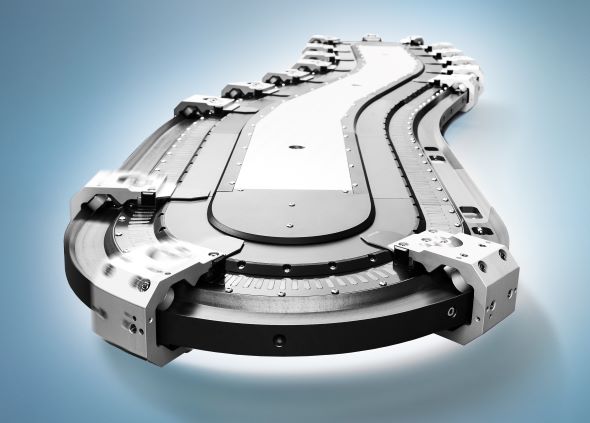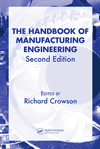These days, most manufacturers realize the importance of collaboration in the process of designing new products and the methods for assembling them. When all corporate functions work together to design, assemble, package, distribute, sell and service a new product—a concept called concurrent or simultaneous engineering—manufacturers can reduce total product cost, decrease time to market, and improve quality.
However, planning to work as a team and actually doing so are sometimes two different things. The right moves from management, or a little technological help, can mean the difference between success and failure.
At companies where engineers are used to interdepartmental cooperation, adopting a policy of concurrent engineering is relatively easy. At other companies, concurrent engineering is a radical culture change. Entrenched managers in some departments may perceive concurrent engineering as a threat to their power, warns Morgan L. Swink, Ph.D., associate professor of marketing and supply chain management at Michigan State University (East Lansing, MI).
In that case, manufacturers may want to try concurrent engineering with a well-chosen pilot project, rather than as a sweeping, companywide mandate. "You want a high-profile project, but not one that’s very risky," Swink advises.
Whether manufacturers have some experience with concurrent engineering or are new to the concept, training is essential for success. "You can’t just throw some articles [on concurrent engineering] at people and expect them to get it," says Swink. "If it’s a major organizational change, you might need someone from outside the company to help."
Nuts and Bolts Issues
The first step in implementing a concurrent engineering project is to organize teams and define their responsibilities. In some cases, the team may only be concerned with how product design will affect manufacturing and assembly. In others, the team may also address broader issues, such as the effects of design decisions on competitive issues and product life cycle considerations, says Swink.Three team arrangements are most often used in concurrent engineering: program management teams, technical teams and design-build teams.
The program management team typically includes the program manager, marketing manager, finance manager, operations manager, aftermarket manager and design managers, says Swink. This group provides management oversight and planning, approves large resource allocations, approves and controls the project budget, and manages the project schedule.
The technical team provides technical oversight, approves key design decisions, and maintains consistency between design elements, says Swink. This team reports to the program management team. Engineering managers from design and functional support areas are typically members of the technical team, along with representatives from marketing, service, manufacturing, quality assurance, test engineering, drafting and documentation, and key customers and suppliers.
The design-build team is similar to the technical team, but is dedicated to a particular product component, says Swink. This team is responsible for delivering designs, prototype hardware, process plans, sourcing strategies, quality engineering, maintenance plans and aftermarket support plans. This team is frequently co-led by design and manufacturing engineers who have a high degree of design authority and budget control.
Concurrent engineering works best when no team is larger than eight people. "You want to keep individual teams pretty small, so things don’t get lost in the shuffle," counsels Swink. "If you’ve got a complex product, like an aircraft, you’ll need a hierarchy of teams."
One problem with working in teams is that reward systems at most manufacturers are based on individual performance, not on contributions to a team effort. Assessing and rewarding the job performance of individuals can be difficult when it depends on the inputs of other team members. Team members may even have conflicting priorities. Swink suggests that teams be judged based on total product unit cost. This encourages both manufacturing and design engineers to work together to produce an optimal design.
When conflicts between team members inevitably arise, "the voice of the customer" can often resolve them. "Ultimately, it’s the customer who must be satisfied," Swink points out. "If it comes down to choosing between what different team members want, keep your customer’s needs at the forefront.
"Of course, that assumes you know what the customer wants. If you don’t, you’re left with opinion, and each department will try to maximize its immediate goals."
Involving Equipment Suppliers
Involving suppliers in the concurrent engineering process is important, especially if the product requires complex manufacturing equipment, like a high-speed, multistation automated assembly system. Ideally, the machine builder should be involved as early in the project as possible. "We want to be involved as soon as there are drawings," says Daniel Roth, director of Prodel Automation Inc. (Coppell, TX).Machine builders can provide invaluable advice on designing the product for automated assembly, says Roth. Part dimensions can be analyzed for ease of fit and handling. A chamfer can be added to a hole or post so parts slide together without difficulty. Parts can be altered slightly to make them easy to orient with vibratory feeders. Parts can be colored or marked so that they can be easily inspected with machine vision. Hard-to-reach screw holes can be moved to more accessible locations before molds are made.
"If the parts have already been approved, then you have a real tough time changing anything," observes Steve Benedict, sales and applications engineer with Com-Tal Machine & Engineering (St. Paul, MN).
Another benefit of involving machine builders in the product development process is the opportunity to build flexibility into automated equipment. If product design changes are expected or if some assembly processes have not been proven, the builder can plan a modular assembly system with a mix of manual and automatic stations that can be rearranged, retooled and reused. Fixtures can be created to accommodate multiple product models. "When we build automation for the first product generation, we are already thinking about the next generation," says Roth.
In a perfect world, every assembly machine would be standard. In reality, 50 percent to 80 percent of most assembly machines is standard equipment, says Roth. And it’s that standardized portion of a machine that the builder can begin fabricating while the product design is being worked out. "The last 20 percent is the parts of the machine that actually touch the product, like the grippers, the end effectors and the fixtures on the pallets," he explains.
Even if the system will be entirely custom, integrators can do quite a lot before the product is finalized, says Benedict. With a rough idea of the size, shape and number of parts, integrators can start working on the system’s layout, positioning assembly stations, feeders and tracks. Integrators can also order components, such as PLCs, displays and actuators, that may require long lead times.
Concurrency Concerns
Some product development projects are less suitable for the concurrent engineering approach than others. Products with cutting-edge technology are a good example. "If the product has a lot of unproven technology, it doesn’t make a lot of sense to spend money on production process development. It’s just risky," says Swink.Another risk is that too much influence from the manufacturing department early in the new product development process could stifle innovation. Manufacturing engineers may be so locked-in to the company’s current processing capabilities that they may not know about new assembly technologies. Indeed, they may even be unwilling to research new processes.
In the end, concurrent engineering is not a one-size-fits-all strategy, says Swink. Concurrent engineering is particularly important when there is stiff competition, when new manufacturing processes are being used, and when reducing development lead time is very important. "The technological challenges and market opportunities should dictate the nature of the concurrent engineering project," he says. "If the technical risk is high, you might not want to overlap product and process design activities too much. But if time to market is really important, you may be willing to take more risk."
Karl T. Ulrich, associate professor of operations and information management at the University of Pennsylvania Wharton School of Business (Philadelphia), takes a more pragmatic approach to concurrent engineering. He argues that the time and money saved through concurrent engineering may not necessarily exceed the costs associated with coordination. "In my experience, just getting everyone in a room together can be cumbersome," he says.
As a result, product development teams should focus on the few decisions that truly are cross-functional. Beyond that, each department should be left to do its job in a natural sequence most of the time. "Boeing built the 777 with design-build teams, but this seemed a brute-force solution," he says. "The company had huge meetings with dozens of people just to coordinate some fairly simple decisions."
Outsourcing is another potential stumbling block to concurrent engineering. Ideally, all the suppliers involved with a product should be involved in the concurrent engineering process. In practice, however, that rarely happens. OEMs are often reluctant to share information with suppliers, or they’re unwilling to maintain long-term, mutually beneficial relationships with suppliers.
"Overcoming the barriers to concurrent engineering is a more formidable challenge in an industry that does a lot of outsourcing than in an industry that is more vertically integrated," says Swink. "Some people say those barriers are coming down now that we have ‘virtual enterprises,’ but the reality is that...it’s a dog-eat-dog world, and OEMs try to squeeze every nickel out of their suppliers."
Com-Tal’s Benedict could not agree more. He recalls a recent project for a medical device manufacturer that had outsourced the design of a new product to a design firm. The design house, in turn, handed the product off to the plastic supplier and the molder, which was also responsible for assembling the product. To complicate matters, the OEM also submitted the product to the Food and Drug Administration for approval, which meant altering its design would cause further delays.
By the time Com-Tal became involved, there were significant design hurdles to overcome. Parts that needed to be ultrasonically welded were not designed for that process. The parts were made from incompatible plastics, and they lacked small tabs to help start the weld. Had Com-Tal been involved earlier, Benedict believes his company could have saved the OEM "a few hundred thousand dollars" and prevented a 4 to 6 month delay.
"Everyone’s afraid of a real partnership," laments Benedict. "People will stick with their doctor or lawyer for years, but with automation, companies fear long-term partnerships, even though it’s a major investment."
To solve the problem, Swink believes incentives should be created for suppliers and OEMs to cooperate. "What rewards are out there for suppliers to commit the resources to develop new product designs?" he asks. "OEMs ask their suppliers to bear all the risk...and they are in a position of power to get away with it. There’s got to be a better way."





